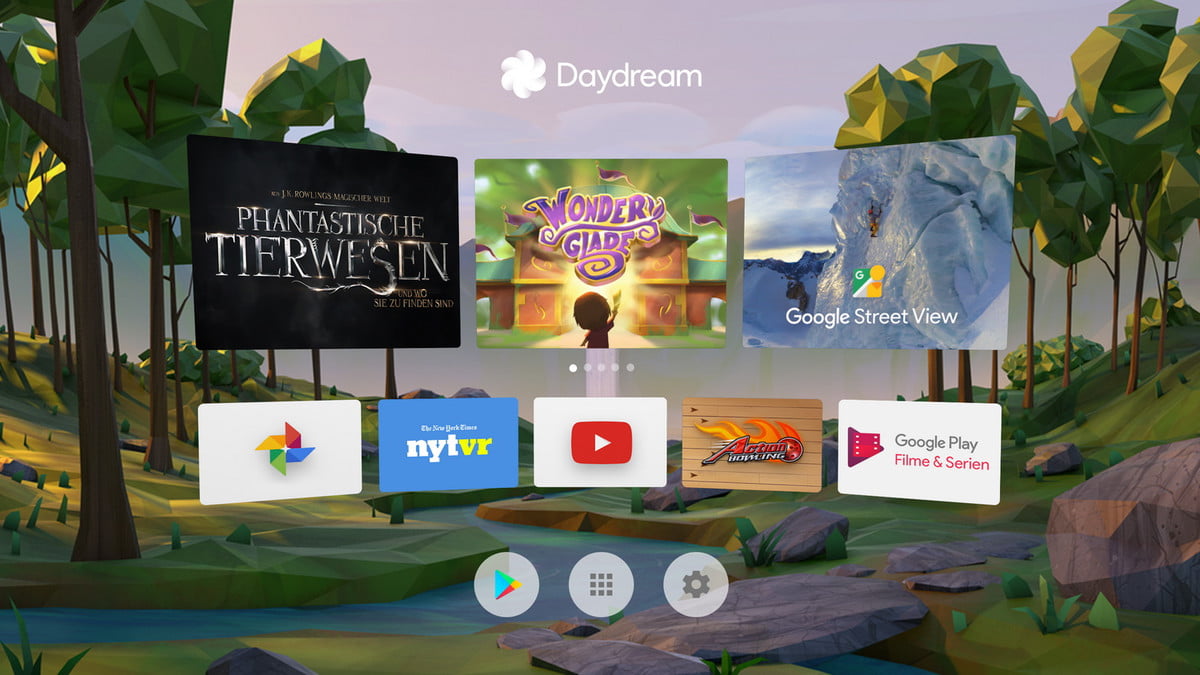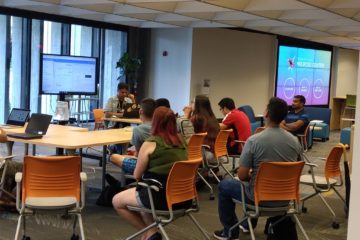Google DayDream and Google Cardboard seek to make virtual reality experiences broadly accessible leveraging your smartphone and cleverly designed viewers. The initial release of Google Cardboard had a great DIY feel. Developers received a laser cut cardboard structure that you fold into a viewer, lenses, and a magnetic button. Using the sensors on your phone, Google Cardboard applications enable you to direct your view of the virtual world. Since the initial release of Google Cardboard in 2014, Google and their partners have launched an impressive ecosystem of VR applications and headsets. Check out the full history of Google cardboard here. Today, you can purchase a comfortable Google Cardboard compatible headset from your local toy store, Walmart, or Target at a low cost. It should be noted that Google Cardboard works on Android and iOS.

Building on the experience of Cardboard, Google designed DayDream as a first class VR experience that includes a motion controller. You can think of the motion controller as a “Wii remote” for VR. The elegant design enables you to point and click on elements of your VR world. With the motion controller, users can explore and interact with VR worlds more robustly. You’ll find apps that let you move around a VR space. Click and scrolling through content is much easier using the controller. Unfortunately, the Google DayDream system requires a high performance device like a Google Pixel or Samsung S8. In the coming years, you will see Google release stand-alone Google Daydream headsets that provide the Google DayDream experience, but does not require a smart phone. During the CES conference this week, we got our first glimpse at the first Google DayDream headset by Lenovo priced around $400.
https://vr.google.com/daydream/standalonevr/
Cool experiences using Google VR
360 Videos on YouTube: For parents and educators, you’ll find YouTube 360 a useful tool for student engagement. Let’s say you’re introducing students to the internals of cells in Biology. You can find 360 videos of cell structure by searching in YouTube. Just include ‘360’ in your search. If a video supports a VR mode of exploration, you simply press the Google Cardboard icon and place your phone into your headset. This feature should exist on Android and iOS. In recent years, major newspapers have started publishing VR experiences to complement news stories. (Washington Post, Discovery, PBS, CNN, etc.)
360 Photos: Over the years, I have started to collect 360 photos of various places on our family trips. Using applications like Google Cardboard camera, it’s easy to take panorama photos and explore them later in VR. This feature should exist on Android and iOS.
Google Street View: I still think it’s crazy and amazing how much of the world has been indexed using Google Street view. Let’s say you want to give your students a tour of Kennedy Space Center in Florida. You can find it on Google street view. On Google DayDream headsets using the Google Street view app, you can tour all snap shots captured in Google Street view. And there’s a lot of them! My kids recently learned that the island in the “Last Jedi” where Rey and Luke meet actually exists in Skellig Michael in Ireland. You can tour this island using Google Street view in Google Daydream!
Arts and culture: Google Daydream has an awesome application for touring museums worldwide entitled “Arts and Culture.” It’s a delightful way to sample great collections of art from the comfort of your device.
Google expeditions: Many at Google have seen the potential of using the engagement factor of VR to inspire curiosity and exploration with their students. To help teachers facilitate “VR field trips” for their classrooms, Google has launched a program and app known as Google expeditions. In the original design of this application, the teacher has a central app for loading different VR scenes and experiences. The control center influences VR headsets used by students in the classroom. Many of these experiences are carefully crafted in collaboration with educators for effective teaching and learning. The collection of VR experiences indexed in this app is amazing. It’s worth checking out. As the class navigate through their “VR field trip”, the teacher can guide and lecture to help focus the students on various parts of their shared experience. In a more recent release of Google expeditions, you can now tour Google expeditions without a teacher guide. To learn more about Google Expeditions, check out the following talk from Google I/O 2017. I really love this application of VR.
In future posts, we will share resources for building Google cardboard and DayDream experiences.


